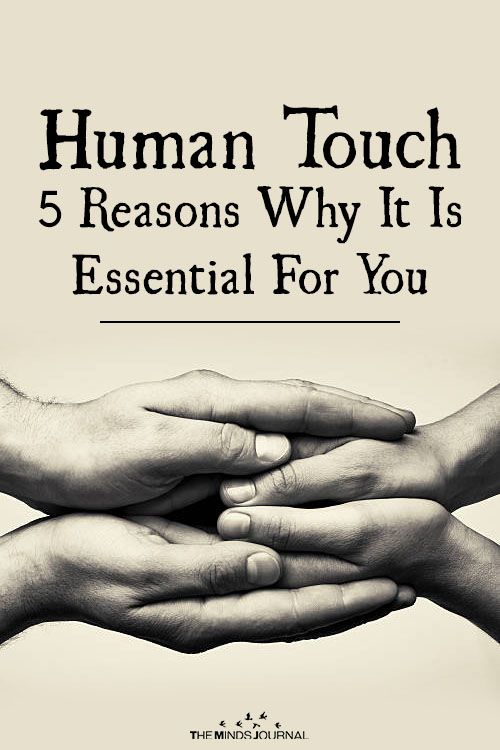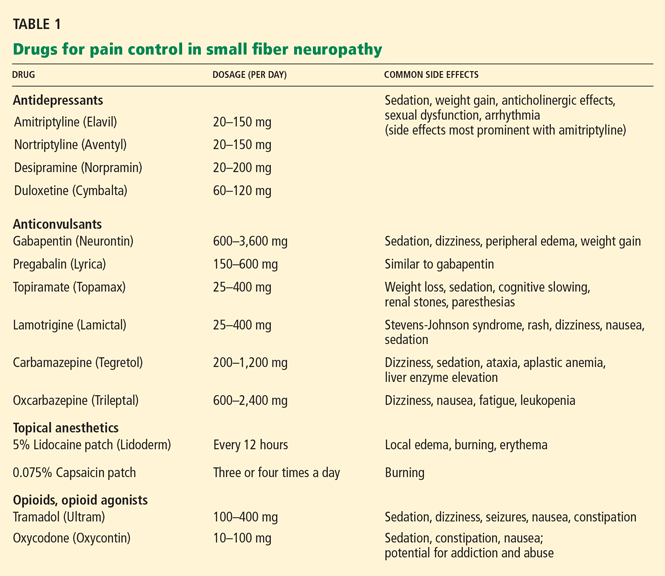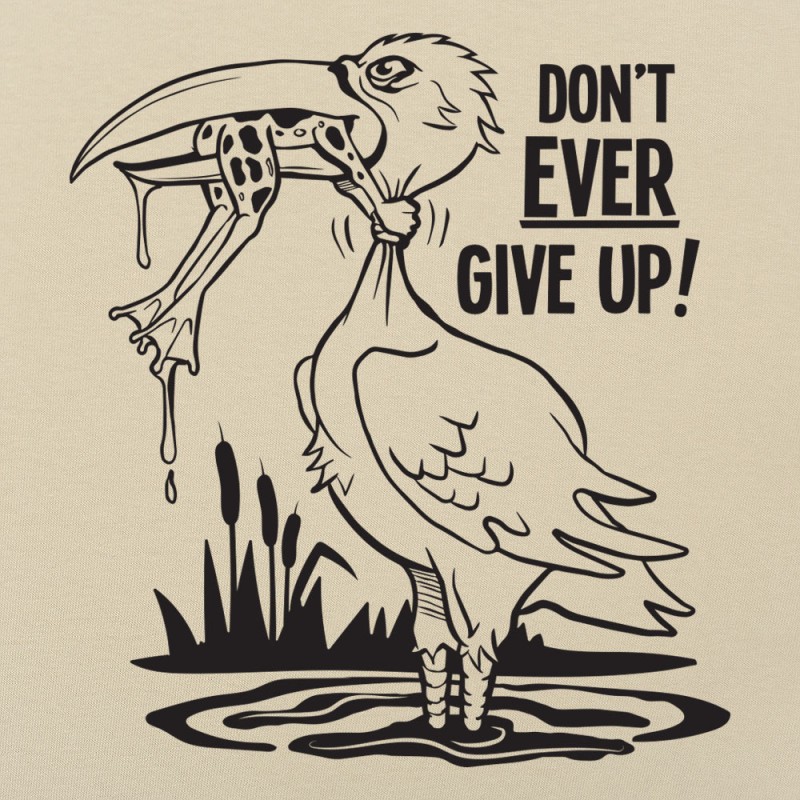Need human touch
The Vital Importance of Human Touch
Source: AlessandroBiascioli/Shutterstock
Let’s be honest. The past 18 months have not invited a lot of touch. Quarantined at home and isolated from friends, many people have felt a lack of connection both emotionally as well as physically. Hugs and handshaking happen much less frequently now. And although the world is slowly returning to normal, the rise of the Delta variant suggests that social distancing will likely continue to define our social interactions for some time.
Much has been written in the media about the limits that social distancing has placed on single people’s sexual activity. As a human sexuality professor, I hear all about this from my students as well as from my followers. What’s largely been missed, though, is a more subtle yet even more fundamental need: the need for human touch.
The Science of Touch
The research demonstrating the need for human touch is vast. From a developmental standpoint, infants literally cannot survive without human touch. Skin-to-skin contact in even in the first hour after birth has been shown to help regulate newborns’ temperature, heart rate, and breathing, and decreases crying (Ferber, Feldman, & Makhoul, 2008). Touch also increases mothers' relaxation hormones and aids in the release of oxytocin. A now-famous study examined the sensory deprivation of children in understaffed orphanages in Romania (Carlson & Earls, 1997). The touch-deprived children, the authors found, had strikingly lower cortisol and growth development levels for their age group.
Harlow’s Monkey experiments (Harlow & Harlow, 1965) are perhaps the most famous example of research pointing at the primacy of the need for touch. In a series of experiments, Harlow created inanimate surrogate mothers for baby monkeys made from wire and wool. Each infant became attached to its particular “mother,” recognizing its unique face and preferring it above others.
Next, Harlow presented the infants with a soft, cuddly clothed "mother" as well as a wire "mother" located in two separate but attached chambers.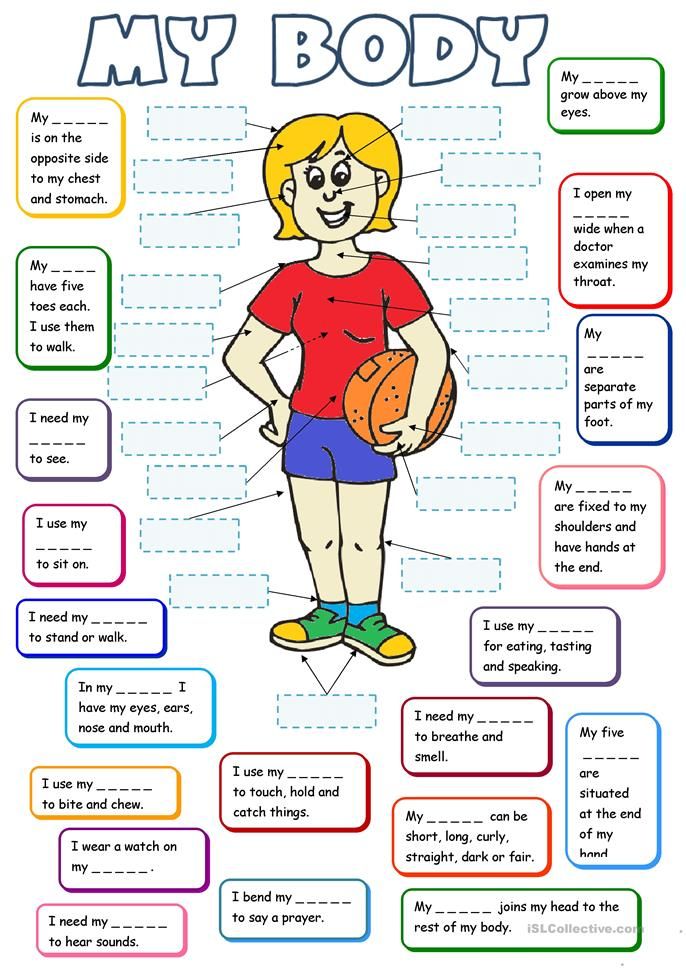 Only the wire “mother” held a bottle with food. Harlow found that the monkeys spent far more time next snuggled against the cloth “mother” than they spent with the wire “mother” even though the wire “mother” was the only one with food. Food may be necessary for survival, but touch is what sustains us.
Only the wire “mother” held a bottle with food. Harlow found that the monkeys spent far more time next snuggled against the cloth “mother” than they spent with the wire “mother” even though the wire “mother” was the only one with food. Food may be necessary for survival, but touch is what sustains us.
Later in his career, Harlow carried out perhaps his most controversial study, by cultivating infant monkeys in isolation chambers for up to 24 months. The infant monkeys emerged from isolation deeply disturbed, a finding of which many credit as having started the animal rights movement.
Since Harlow’s experiments, research has uncovered an astonishing number of poor health outcomes that result when we are deprived of touch. The correlation between anxiety, depression and stress and touch is large and inversely related. It has been found that touch calms our nervous center and slows down our heartbeat. Human touch also lowers blood pressure as well as cortisol, our stress hormone. It also triggers the release of oxytocin, a hormone known for promoting emotional bonding to others.
It also triggers the release of oxytocin, a hormone known for promoting emotional bonding to others.
Studies using PET scans have found that the brain quiets in response to stress when a person’s hand is held. The effect is greatest when the hand being held is that of a loved one, but it still works even if it’s just a stranger (Field, 2010).
Research also suggests a negative correlation between touch and the severity of borderline personality disorder symptoms (Field, 2010). This suggests that the effects of touch extend to our basic neural circuitry. Even our immune response seems to be somewhat governed by touch, with the finding that those who are deprived of human touch are more likely to suffer from immune system diseases. It’s ironic that during a highly contagious pandemic where our immune systems are being the most stressed, we are being deprived of something (human touch) that is so essential to its function.
How to Increase Touch in Your Life
Given the obvious importance of human touch, one question may be how to introduce more of it into your life.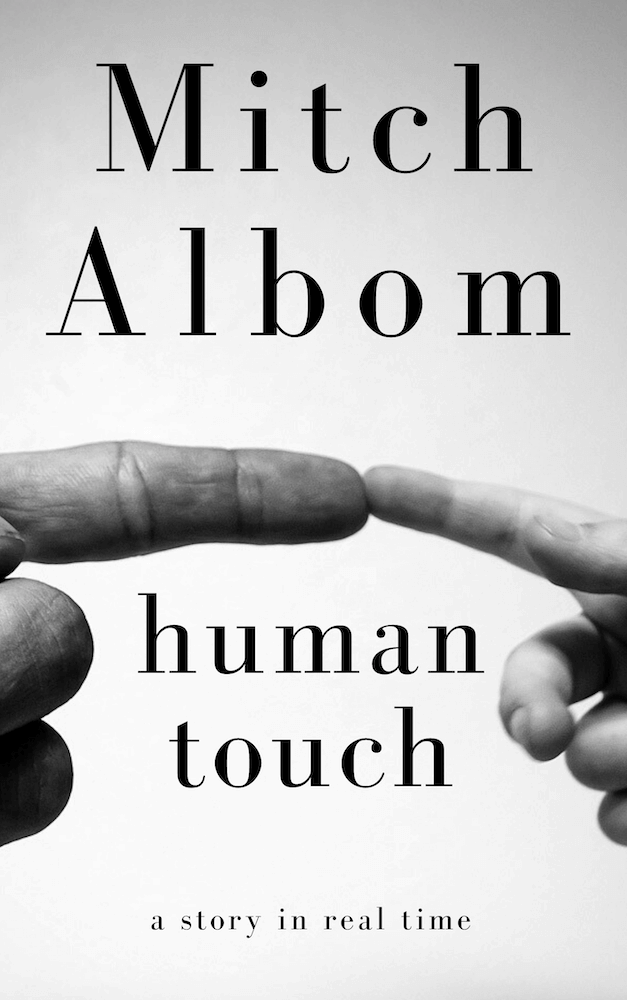 Even for those lucky enough to live with families or other people one has podded with, the amount of touch we are receiving has undoubtedly decreased since before the pandemic.
Even for those lucky enough to live with families or other people one has podded with, the amount of touch we are receiving has undoubtedly decreased since before the pandemic.
Research shows that one of the most effective ways to benefit from the therapeutic benefits of touch is through massage. Massage therapy has been shown to ease depression, increase attentiveness and enhance immune function (Lindgren, Jacobsson & Lamas, 2014). If massage therapy is not your thing, maybe a manicure or pedicure or other type of spa treatment that involves touch is. Pets have also been found to mimic some of the benefits of human touch, so long as you spend ample time petting them (Young et al. 2020). Although weighted blankets aren’t human, they’ve been found to calm the nervous system in the same manner as touch. Just pretend you are one of Harlow’s monkeys.
Consent is Key
One final note: Although the need for human touch is immense, it’s important to highlight consent. Just because you are in desperate need of touch does not mean that any other person is obligated to give it to you, nor should they be pressured into doing so.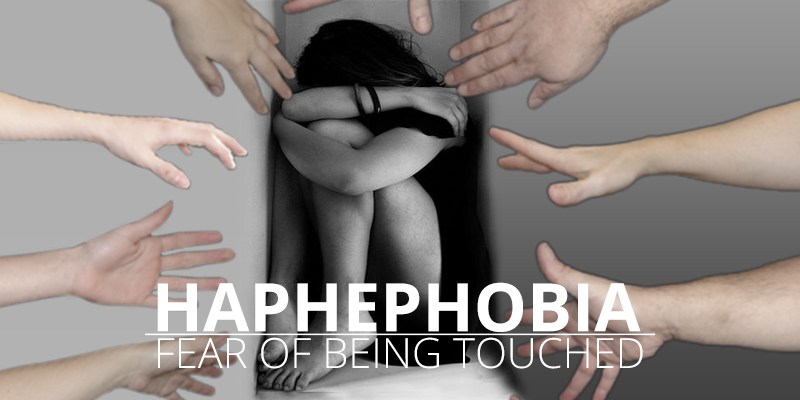 This rule extends to children especially, who are learning the importance of recognizing their own privacy spheres. This may not go over well with grandma and grandpa, but the criticality of consent is an important enough lesson that drawing the line is worth it.
This rule extends to children especially, who are learning the importance of recognizing their own privacy spheres. This may not go over well with grandma and grandpa, but the criticality of consent is an important enough lesson that drawing the line is worth it.
Facebook image: AlessandroBiascioli/Shutterstock
References
CARLSON, M. and EARLS, F. (1997), Psychological and Neuroendocrinological Sequelae of Early Social Deprivation in Institutionalized Children in Romania. Annals of the New York Academy of Sciences, 807: 419-428
Harlow HF, Dodsworth RO & Harlow MK (1965). "Total social isolation in monkeys". Proceedings of the National Academy of Sciences of the United States of America. Proceedings of the National Academy of Sciences. 54 (1): 90–97.
Lindgren L, Jacobsson M, Lämås K. “Touch Massage, a Rewarding Experience.” Journal of Holistic Nursing. 2014;32(4):261-268.
Ferber, Feldman & Makhoul (2010) “The development of maternal touch across the first year of life,” Early Human Development, Volume 84, Issue 6,
Field, T. (2010),”Touch for socioemotional and physical well-being: A review”
(2010),”Touch for socioemotional and physical well-being: A review”
Developmental Review, Volume 30, Issue 4, Pages 367-383
Young J., Pritchard R., Nottle C., & Banwell H. (2020) “Pets, touch, and COVID-19: health benefits from non-human touch through times of stress.” Journal of Behavioral Economics for Policy, Vol. 4
What Is Touch Starvation? 20 Things to Watch for, What to Do, and More
Humans are wired to be touched. From birth until the day we die, our need for physical contact remains.
Being touch starved — also known as skin hunger or touch deprivation — occurs when a person experiences little to no touch from other living things.
Indeed. The condition seems to be more common in countries that are becoming increasingly touch averse.
For example, a 2015 study measured to what degree people welcomed touch in five countries. Finland and France were found to be at the top, while the United Kingdom was at the bottom.
Why cultures vary in their acceptance of touch, no one is sure. It may be due to the rise in technology use, a fear of touching being viewed as inappropriate, or cultural factors.
It may be due to the rise in technology use, a fear of touching being viewed as inappropriate, or cultural factors.
But research from 2014 has found that missing out on regular human touch can have some serious and long-lasting effects.
Definitely not. Any and all positive touch is considered beneficial.
During the COVID-19 pandemic, many people are losing out on workplace handshakes, friendly hugs, or pats on the back, which can result in feelings of touch starvation.
For some, the pandemic has also brought a decline in sensual touching, such as holding hands, back scratching, and foot rubbing, too.
Scientists have found that a system of nerve fibers, called C-tactile afferents, exists to recognize any form of gentle touch.
In fact, according to a 2017 study, the ideal touching speed is about 3 centimeters per second.
This releases oxytocin, also known as the “love hormone.”
Skin-to-skin contact is vital not only for mental and emotional health but physical health, too.
When you feel snowed under or pressured, the body releases the stress hormone cortisol. One of the biggest things touch can do is reduce such stress, allowing the immune system to work the way it should.
Touch can also calm certain bodily functions, such as your heart rate and blood pressure.
It does so by stimulating pressure receptors that transport signals to the vagus nerve. This nerve connects the brain to the rest of the body. It uses the signals to slow the pace of the nervous system.
In early life, touch is thought to be crucial for building healthy relationships by stimulating pathways for oxytocin, the natural antidepressant serotonin, and the pleasure neurotransmitter dopamine.
Plus, it can tackle loneliness. According to a 2017 study, gentle touch can reduce both pain and feelings of social exclusion.
There’s no definitive way to know. But in a nutshell, you may feel overwhelmingly lonely or deprived of affection.
These symptoms may be combined with:
- feelings of depression
- anxiety
- stress
- low relationship satisfaction
- difficulty sleeping
- a tendency to avoid secure attachments
You may also subconsciously do things to simulate touch, such as taking long, hot baths or showers, wrapping up in blankets, and even holding on to a pet.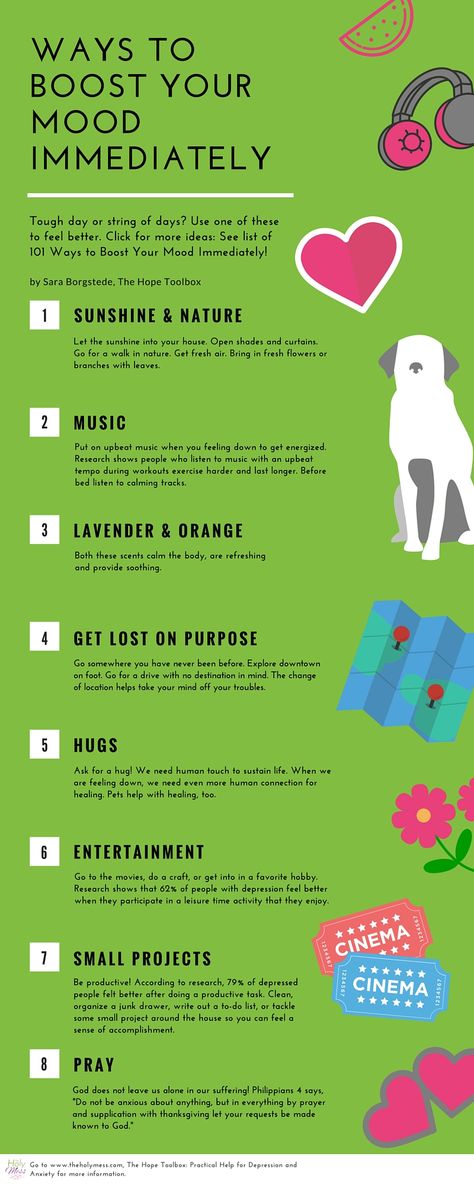
Some people closely link touch with trust. If they don’t trust a person, they’re unlikely to want that person to touch them. But that doesn’t mean they don’t long for the benefits of a hug or handshake.
For example, not liking touch is sometimes reported by people on the neurodiverse spectrum and people who are asexual.
It may also be a result of childhood experiences. A 2012 study suggests that people whose parents were regular huggers were more likely to hug people in adulthood.
Failing to experience frequent positive touch as a child may affect the development of the oxytocin system and the child’s intimacy and social skills — although this isn’t true for everyone.
Touch starvation doesn’t have to last forever.
Here are some simple ways to welcome more affection into your liferight now.
Keep in mind you may need to dial these activities back a bit during the COVID-19 pandemic, or avoid them until your local health officials give the OK:
- Try out a massage.
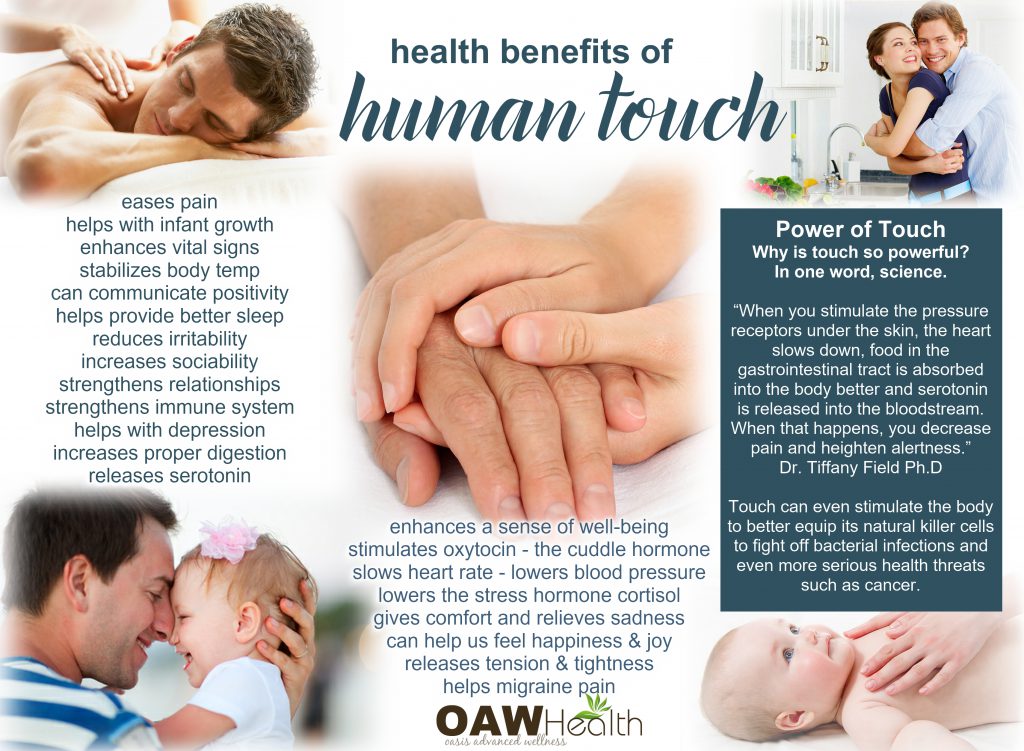 Whether you ask a loved one or visit a professional, massages can help you relax and enjoy the benefits of another person’s touch.
Whether you ask a loved one or visit a professional, massages can help you relax and enjoy the benefits of another person’s touch. - Spend some quality time with animals. Often all too happy to cuddle, pets are the ideal soothing mechanism. According to the Centers for Disease Control and Prevention (CDC), the risk of animals transmitting the coronavirus to people is low, based on limited information currently available.
- Get your nails done. A manicure or pedicure may give you the human contact you need, and a new look to boot. When your local health department gives the OK, think about dressing up your hands and feet.
- Visit the hair salon. If you don’t fancy a cut, book yourself a wash and blow-dry for ultimate relaxation.
- Learn to dance. Most slow dances are built around skin-to-skin contact. That may not be a good choice during the pandemic. But as soon as you’re vaccinated and your health department gives a thumbs-up, think about learning some new moves.

- Go to a cuddle party. Yes, these are real. And no, they’re not as strange as they sound. As soon as you and your friends are vaccinated and your health department gives the go-ahead for indoor gatherings, consider trying it out.
With lockdowns, closed businesses, and medical advice to physically distance and avoid touching people not in your household, human touch has dwindled to a slow stream. For some, it has dried up altogether.
Medical facilities like the Department of Psychiatry and Behavioral Sciences at the University of California, San Francisco and the Texas Medical Center warn that touch starvation is real. It’s important to find ways to keep in touch during the pandemic.
Sustaining regular touch during the COVID-19 pandemic can be challenging. If you live with other people or are part of a pod, there are likely people you can touch safely. You might try the tips below.
For yourself
- Sit close to your loved ones.
 Instead of spreading out on the couch, make an effort to cuddle up during your Netflix sprees.
Instead of spreading out on the couch, make an effort to cuddle up during your Netflix sprees. - Greet household members with a hug. If hugging people within your household or pod is safe, try this type of greeting. It may help both of you satisfy your touch hunger.
- Use touch when appropriate. In a romantic relationship, hold hands or cuddle. In platonic ones, reassure people with a touch to the arm or a pat on the back. Always make sure the touch is safe and other people are comfortable before going ahead.
For your loved ones
- Give them plenty of positive touch. This can range from gentle strokes to full-on cuddling a few times a day.
- Avoid associating touch with negativity. Don’t pinch or push or do anything that takes away the feel-good vibes of physical contact.
- Let children be close to you as often as possible. Allowing your child to sit on your lap or gently massaging your baby are important for bonding and the emotional growth of the child.
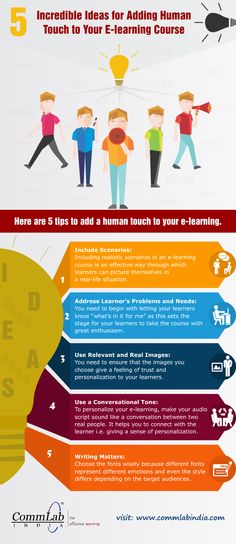
If you can’t touch safely
Maybe you’re one of the 35.7 million Americans who live alone. Or maybe you live with people who work in high-risk settings. Or perhaps touch in pandemic circumstances just isn’t worth the risk to you.
In these and countless other scenarios, you may not have the opportunity for touch, or you may not feel safe with any human touch right now. There are still ways you can help satisfy your touch hunger — without physical contact.
Try the tips below. They might not be the real thing, but they do provide human contact and interaction:
- Meet new people or connect with friends online. Technology provides many ways for online contact. Try video chat or virtual exercise classes or book clubs.
- Wave to neighbors or passersby. Most of us take a daily walk. Try waving and maybe even meeting new people, from a physical distance, of course.
- Host an online dinner. Invite family and friends to share a meal via a video app like Skype or FaceTime.
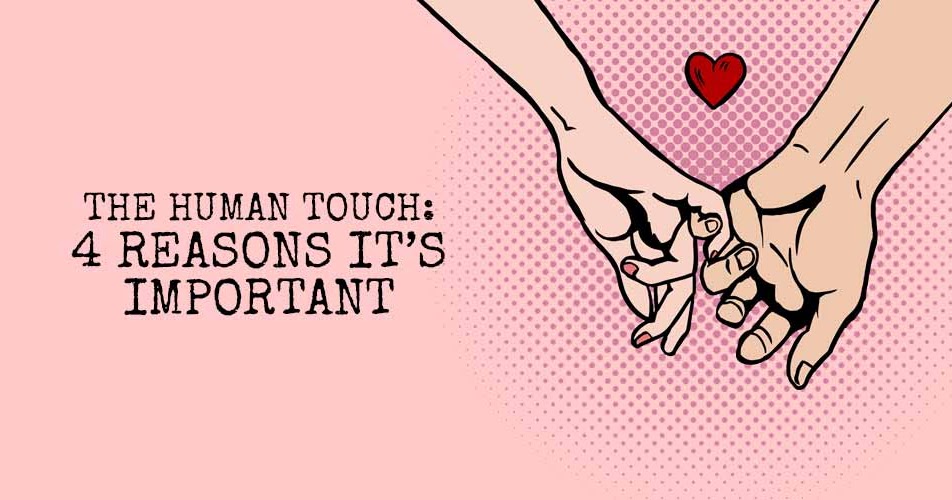
- Connect via text and email. Be sure to use lots of emojis or gifs that emphasize physical touch, like thumbs-up or waving hands.
- Talk with neighbors outside. Chat at a safe distance through a window or from a porch or backyard.
- Try new outdoor group activities. Some group activities let you be with others without the risk involved in close quarters or touching. Try classes that involve physical distancing like yoga, painting, or tai chi.
If you’re feeling touch starved, you haven’t sealed your fate. There are plenty of ways to beat the condition and inspire positive, affectionate touch in those around you.
Lauren Sharkey is a journalist and author specializing in women’s issues. When she isn’t trying to discover a way to banish migraines, she can be found uncovering the answers to your lurking health questions. She has also written a book profiling young female activists across the globe and is currently building a community of such resisters.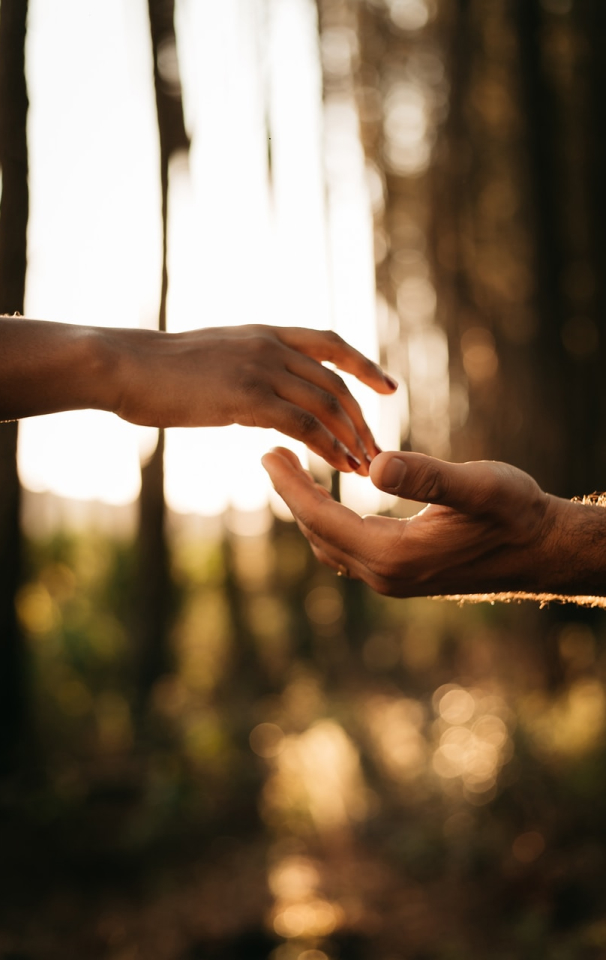 Catch her on Twitter.
Catch her on Twitter.
Composition "Human touch" • Science and education ONLINE
Main Competition works Subject education Philological disciplines Essay "Human touch"
Author: Zharkova Aleksandra Konstantinovna
School of work/study (affiliation No. МУУ6): 157, Yekaterinburg, grade 10
“Human touch is our first communication with the world. It allows us to feel all the warmth of this rich, modern, extravagant and at the same moment dangerous world. The touch can be different: affectionate, gentle, soft, fleeting, burning or even passionate. It can also create a positive perception in the person being touched. Touch brings joy, love, purity, excitement…. In addition, touch is the solution to many problems. This is confirmed by very interesting facts. First, how did the Nutcracker come to life? We all know that from the touch of Mary. Or how the Prince saved Sleeping Beauty? The answer will not keep you waiting long, the prince touched his lips to the young Snow White.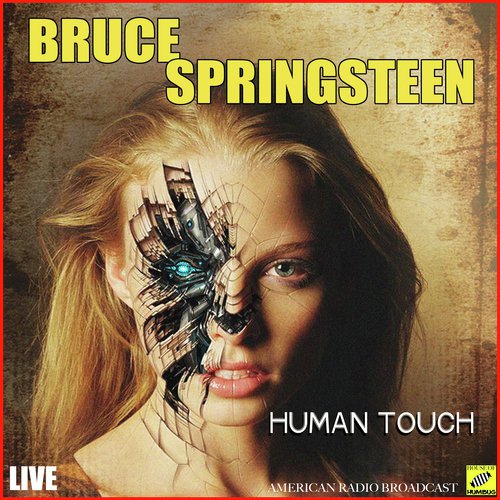 And how did Apollo stretch out his hands to the sick? Touch gives us a message through fairy tales, stories, how to appreciate what the Universe has given us. Nevertheless, does every person understand the whole essence of touch? ..»
And how did Apollo stretch out his hands to the sick? Touch gives us a message through fairy tales, stories, how to appreciate what the Universe has given us. Nevertheless, does every person understand the whole essence of touch? ..»
Loading...
Philological disciplines
Essay-interview "A man who devoted himself to space"
The full-text version of the work
"The main thing is space and its immensity" is available for viewing. A few decades ago, these words of the American writer Ray Bradbury would have seemed fiction, but after a while they turned into reality. Today, astronautics is one of the leading o...
View work
Philological disciplines
Composition “Inner world and moral qualities of a person”
Full-text version of the work is available for viewing
“A person close to nature is perfect. He who is truly close to nature understands as something more, it will definitely be kind, sweet and sympathetic.At this time, we do not understand nature at all and have clearly forgotten what it is like to open our inner world...
He who is truly close to nature understands as something more, it will definitely be kind, sweet and sympathetic.At this time, we do not understand nature at all and have clearly forgotten what it is like to open our inner world...
View work
Philological disciplines
Essay “The Tale of how Sengileevsky Language collected words…”
Full-text version of the work is available for viewing
Essay on the importance of language as a historical and cultural phenomenon. "He lived and lived, did not differ much from the Great Mighty Russian Language, the Sengileevsky Language, except perhaps in dialects. One morning he looked out the window. The day was fine ... disciplines
Composition "The Power of the Atom"
"Russian is a language of high culture with which we can work miracles. The Russian language is so rich that thanks to it you can express your delight, describe the beauty that surrounds, make a compliment to your loved one. But besides this, u...
The Russian language is so rich that thanks to it you can express your delight, describe the beauty that surrounds, make a compliment to your loved one. But besides this, u...
View work
Philological disciplines
Composition "Condensed salute"
Full-text version of the work
"Traditionally, on December 31, my grandmother Olya bakes for our entire large family holiday meals. This year was no exception, and grandmother decided to treat us to a delicious cake, the cakes of which she plentifully grease with boiled condensed milk. Well, very tasty p...
View work
Philological disciplines
Essay "The miracle of the most important second (popular science extravaganza)"
The full-text version of the work is available for viewing
The essay in a simple and fascinating form presents to the general public a picture of the origin of the Big World according to the Theory explosion. "Imagine - there is nothing. Nothing at all. No sound, no light, no smells, no tactile sensations. No matter, no...
"Imagine - there is nothing. Nothing at all. No sound, no light, no smells, no tactile sensations. No matter, no...
View work
Touching digital - Offtop on vc.ru
How to combine digital technologies with biochemistry and create a new experience in human life
1163 views
Now more than ever we miss human warmth and touch. My name is Nika Lukina and I'm sitting in self-isolation in St. Petersburg, trying to figure out what I'm missing and why tactility is so important. How well-known brands achieve the necessary emotions with the help of digital, which are so necessary now. nine0003
About the problem that existed before the pandemic
We are now at the point where digital transformation is taking place right here and now. Processes have greatly accelerated and what used to be considered the “Big Problem” is now a necessity for the survival of the business.
Digital transformation came as a given to companies that were not created as digital and did not expect such a global upheaval. Some of them have become services themselves, some add digital services to the overall business model. These are banks, taxis, telecoms, retail and many others. Even sole proprietors must integrate digital tools into their work, for example, in accounting. nine0003
Some of them have become services themselves, some add digital services to the overall business model. These are banks, taxis, telecoms, retail and many others. Even sole proprietors must integrate digital tools into their work, for example, in accounting. nine0003
Service competition has become dominant over product competition, today it is increasingly difficult to find a product that is not part of a digital service or whose consumption is not digitized. As a result, customer service now includes not only direct services, but also a convenient application, chat with the support service, and so on.
All of these companies face the same challenges in adopting new digital technologies. These are problems at all levels: from integrating core systems for internal processes to developing websites and managing advertising activities. To one degree or another, every company has pains associated with this. And the appropriate expertise that would help to cope with these problems is not enough within the company. nine0003
nine0003
What does the man have to do with it?
Using Big Data, you can analyze where potential customers spend their time and create dynamic maps that show "hot zones" with the target audience. This is necessary in order to choose the location of both offline points of sale and outdoor advertising where it will be definitely noticed. Big Data helps shape the product itself, the way users want it to be. Big data analysis turns an anonymous array into a live audience, with vivid emotions, diverse personalities, habits and attachments. nine0003
The modern practice of creating a human-oriented digital product is reminiscent of radical behaviorism in psychology. There is a signal, there is a reaction - action or emotion. Practices such as Design Thinking or Jobs To Be Done even help define the prerequisites for behavior. But here is what is almost always forgotten: about physiology or biochemistry. It plays an important role in the birth of our emotions.
Tactility, digital and hormones
Several products have already appeared at the intersection of digital and physical aspects. As usual, the trendsetter is Apple (who have patented tactile sensations when pressed): the Taptic Engine sensor is integrated into watches and smartphones, which “understands” the degree of pressure on the screen and gives tactile feedback to the user, the MacBook is equipped with an unusual “butterfly” pressing mechanism, which gives a pleasant typing experience and so on. nine0003
As usual, the trendsetter is Apple (who have patented tactile sensations when pressed): the Taptic Engine sensor is integrated into watches and smartphones, which “understands” the degree of pressure on the screen and gives tactile feedback to the user, the MacBook is equipped with an unusual “butterfly” pressing mechanism, which gives a pleasant typing experience and so on. nine0003
A product such as IQOS also has vibration - it simulates lighting at the beginning of use and gives a signal that it's time to stop. These little things are not of particular practical use, but they give the client the opportunity to get pure emotion literally at their fingertips. A soulless object acquires character and individuality.
Digital products themselves are also changing, from operating systems to music album covers. Previously, skeuomorphism (visual imitation of real objects) was needed so that users would not get lost and see familiar things. Today, it has been abandoned and only those elements that are strongly tied to physical returns have been left.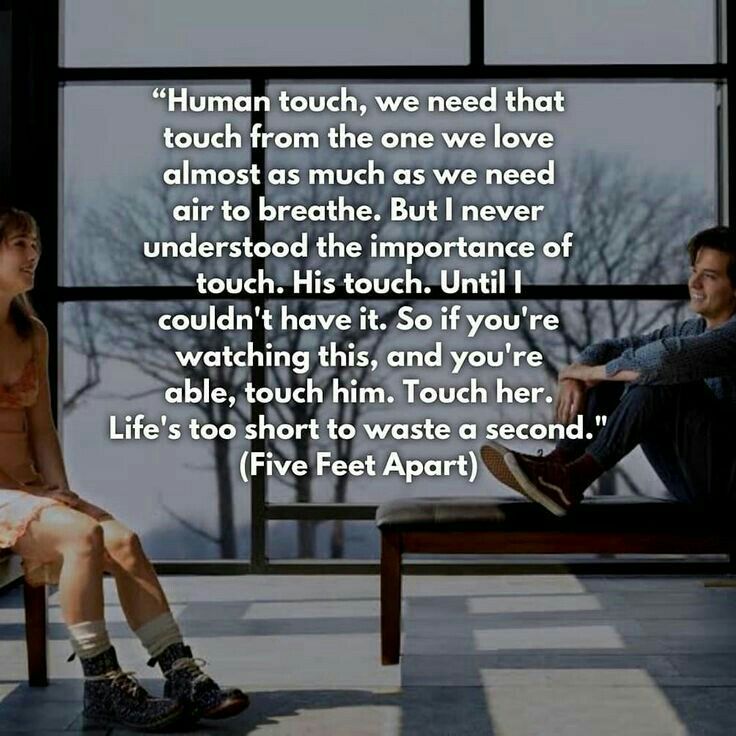 Mobile OS interfaces almost imperceptibly hook us on a physical level with vibrations or shadows to simulate depth, creating a sense of real touch. nine0003
Mobile OS interfaces almost imperceptibly hook us on a physical level with vibrations or shadows to simulate depth, creating a sense of real touch. nine0003
Emotions and their cause, hidden in our physiology, is a new niche for creating a competitive advantage in demand management. And while it is relatively free, although in addition to Apple technologies, things are already appearing that imitate physical interaction or the perception of the physical in a digital way - this is both material design and Yandex Music covers.
Impression is the strongest tool in which physics works for a brand or service. Fixing objects in memory occurs as a result of physical acquaintance with it. So Apple long ago abandoned the “Design” tab on the site for new iPhone models in order to send users to offline stores and provoke them to hold the new model in their hands. nine0003
When we talk about the client's happiness, the thought immediately arises that happiness is different for everyone: someone is happy on the day of their salary, and someone at the moment of stroking their beloved cat. Of course, there is no universal happiness, but there are hormones that can generate positive emotions. Several chemicals are responsible for generating pleasure in the brain, most commonly dopamine, serotonin, and endorphins.
Of course, there is no universal happiness, but there are hormones that can generate positive emotions. Several chemicals are responsible for generating pleasure in the brain, most commonly dopamine, serotonin, and endorphins.
Dopamine is released in response to a pleasant stimulus and in anticipation of receiving it. The stimulus can be different, including sensory (for example, stand with your feet on the warm sand on the beach). Serotonin has a huge number of functions, including reducing sensitivity to pain and creating a good mood. Endorphins can also reduce pain and in large quantities even create a feeling of euphoria. nine0003
Modern neuroscience gives an idea not only about the nature of happiness, but also about what exactly can give it to us. So, scientists from John Moore University found that impulses from gentle touches on the human body go to the somatosensory cortex of the brain, as well as to areas associated with emotions. After studying the biochemistry of touch, the researchers found a population of nerve fibers that deliver hedonistic impulses to the brain. This is a whole system inside a person, aimed at getting pleasure from contact. nine0003
This is a whole system inside a person, aimed at getting pleasure from contact. nine0003
Research by the same scientists at John Moores University also showed that autistic people have no need for social contacts, in large part precisely because they have impaired emotional perception of touch. This opens our eyes to the fact that biochemistry and tactility are at the heart of enjoying communication.
When we meet friends, we often don't just say "password" as a greeting. We smile, hug or shake hands. All this experience is important to us, it gives an understanding of whether this person is ours or not, whether we want to be close to this person, even if we cannot explain how it works. But for those who develop digital technologies, it's time to learn how to use it. nine0003
We are no longer surprised that the phone "recognizes" the owner not only by fingerprint, but also by face. Technology goes further: payment systems introduce the ability to pay with a smile. KFC has implemented in one of its Chinese restaurants the technology of payment using the identification of the client: he only needs to enter the phone number associated with Alipay and smile at the terminal.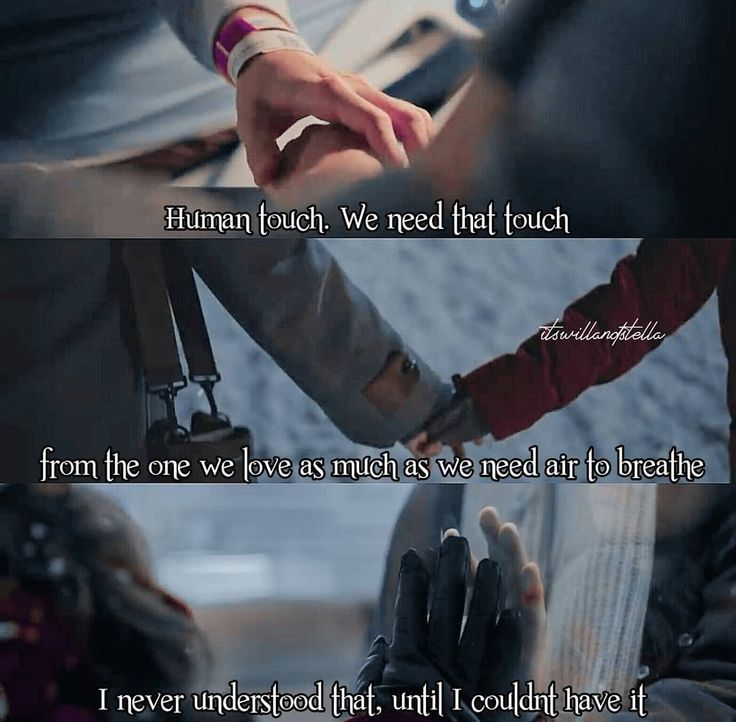 In Russia, the selfie payment service was developed by VisionLabs (Skolkovo resident) together with the Russian payment system SWiP. nine0003
In Russia, the selfie payment service was developed by VisionLabs (Skolkovo resident) together with the Russian payment system SWiP. nine0003
Modern neural networks perfectly recognize faces and human speech, moreover, they generate it. Neural networks have already been trained to give phrases for a successful “tackle” on dating sites, and they are better at it than some people. It is generally accepted that people are increasingly closed in their shell. In 1986, the United States even came up with World Hug Day - just for those who lack human warmth. I feel that we will celebrate this day on the last day of quarantine. nine0003
But what if technology could not alienate people from each other, but rather make them feel closer? Especially now, in self-isolation mode, such platforms as zoom, instant messengers unite us and do not make us feel lonely.
And what separated us before, for example, hanging on the phone during dinner, for lonely people, has become a unifying factor now.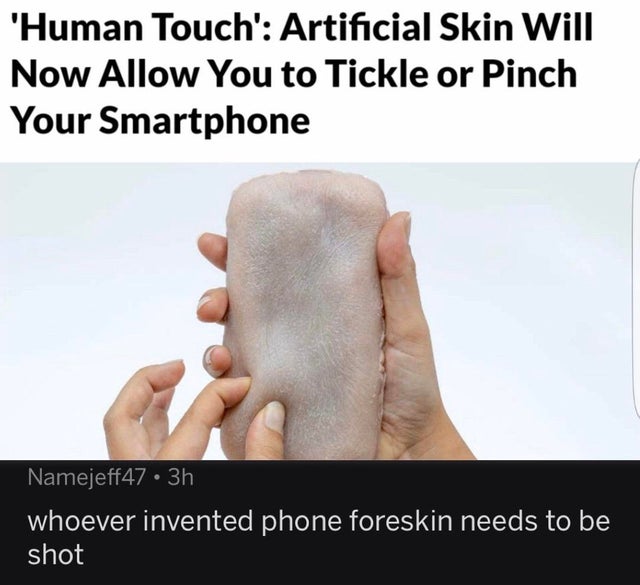
The already mentioned Apple Watch has many tricky features, one of which allows you to send a vibration signal to the watch to another person. Not to mention remote sex toys and the ability to go to an "online theater" and experience emotions in headphones, and then share the experience with friends. nine0003
About beauty and happiness
In his TED Talk, "Why Pretty Things Are Needed," Don Norman talks about three levels of emotion that the design of things can affect. These are:
Body level . We like warmth, sun, sweet taste, etc. Therefore, we can buy a thing simply because it is pleasant to the touch.
Behavioral level. These are such things as a feeling of control over the situation, ease of understanding, convenience. At this level, the design of the technique often works: we must see how simple and convenient it is. One button? Wonderful! nine0003
Reflexive level . Benefits to the environment, a sense of security, the desire to make a good impression, image.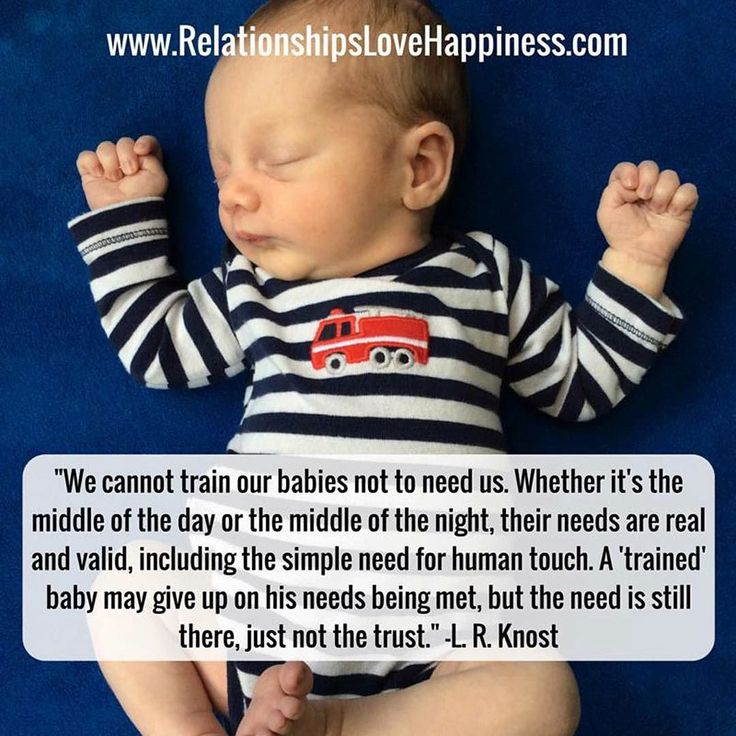 So, we can buy a thing that is not very convenient, but environmentally friendly, and we will do it because we like the feeling of our usefulness and responsibility.
So, we can buy a thing that is not very convenient, but environmentally friendly, and we will do it because we like the feeling of our usefulness and responsibility.
This again refers us to emotions and feelings, this approach is the opposite of the concept of Zero-design, in which there is no visual, tactile or other component, except that dictated by statistics and big data. nine0003
So why do you need something that has no functional value and does not participate in any way in the user scenario? Beauty, pleasant tactile sensations, and even smells are important for maintaining the emotional background during the user experience, and are important at the physiological level.
Don Norman says that if you're nervous or scared, you release a lot of neurotransmitters in your brain, and if you're happy, you release dopamine in your frontal cortex. In the first situation, you fall into a stupor and cannot complete even simple tasks, and in the second case, you go into the “think big” mode and cope with tasks more easily.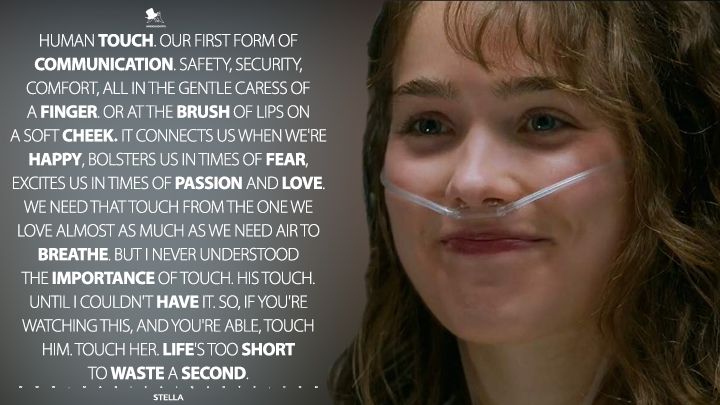 Simply put, if you use something that you enjoy, you are physically doing it more efficiently. This thing helps you to solve your tasks better. nine0003
Simply put, if you use something that you enjoy, you are physically doing it more efficiently. This thing helps you to solve your tasks better. nine0003
This is how the beauty and tactile features of the product become an integral part of the product and the brand. And since in parallel with this there is a digitalization of all products, all these details begin to merge with the digital environment. And here we are very close to the topic of IOT, internet of things. It is becoming increasingly difficult to find a product that is not connected or does not communicate with the digital environment. On the one hand, ordinary things turn into data sources, on the other hand, they must be sold and be desired. nine0003
Neuromarketers are now closest to the point of this convergence. A series of studies "Coca-Cola vs. Pepsi" has become a landmark for the industry. In blind tests, consumers preferred Pepsi, and in non-blind tests, Coca-Cola consistently won. It turned out that people enjoyed the drink more just because they liked the brand.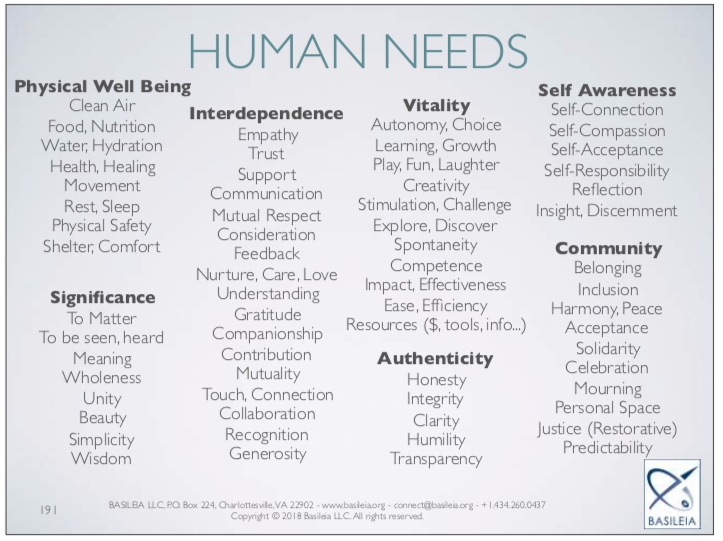 This effect is called placebo marketing.
This effect is called placebo marketing.
Since this study, almost all players from the Fortune-500 list have become clients of neuromarketing companies (which once again confirms their effectiveness). In the process, the importance of neuropsychology has also increased, which develops at the intersection of neuroscience, psychology and psychophysiology. nine0003
Neuropsychologists help businesses discover important but not obvious things. For example, they give an understanding that a weighted envelope with a credit card is perceived by the client as more significant in terms of importance. which contributes to his loyalty to the bank.
At the same time, the importance of neuropsychology is still very often underestimated in business, treating it at best as something that can help make advertising more effective, without allowing it to create products or develop a strategy. Often, a company already has a clear structure, which is not so easy to integrate a neuropsychologist into, because this restructures many well-established processes.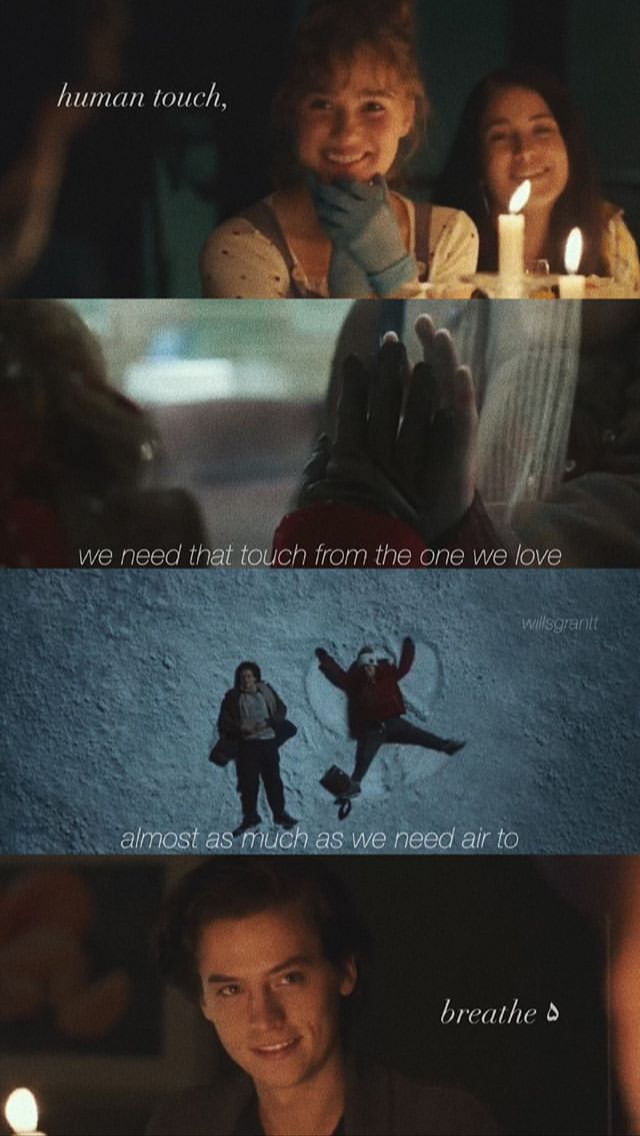 nine0003
nine0003
At the same time, it is not enough to order recommendations from a consulting company and implement them; it is much more important (and more difficult) to develop and maintain a new environment. To maintain this environment, many leading companies hire a team coach. Most likely, in the near future, a successful business simply will not be possible without such coaching.
And what's next?
Now those who could build a strong emotional connection with their consumer or are establishing it right now with pleasant tactile or digital bonuses and human attitude survive. nine0003
But the importance of Customer Experience continues to grow at such a pace that the CX departments will become the dominant departments in companies, and the composition of these departments will grow both qualitatively and quantitatively. In the company of the future (and already present), neuromarketers and neuropsychologists, user behavior consultants, coaches, and even customer happiness specialists are becoming necessary.